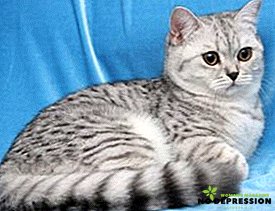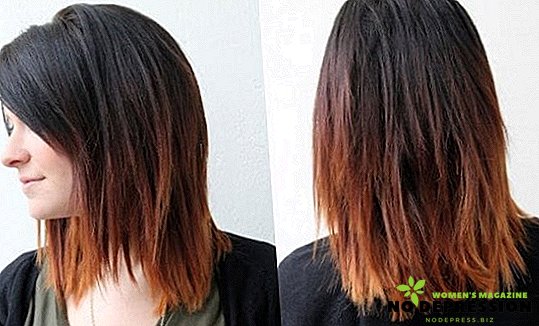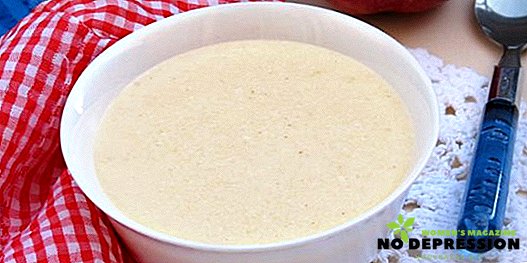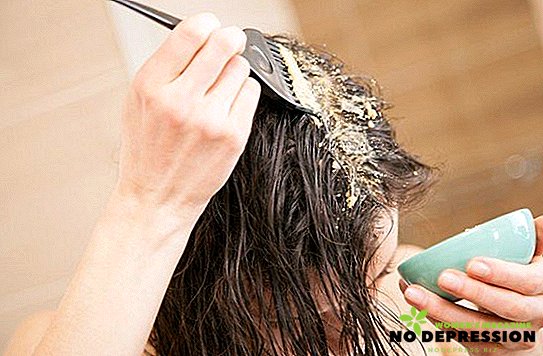Scottish Fold was considered one of the most popular cat breeds in the world. And this is not surprising. These animals have a flexible temper and attractive appearance with unusual ears. However, in recent years, representatives of this breed called the Scottish Straight have begun to gain great popularity among breeders. What is the relevance of these animals, their main differences, as well as the rules of the content will be described in detail in this article.

The origin of the breed
 When there were, lop-eared cats, still not exactly established. The first mention of these animals was dated in China in the World Journal of Knowledge and Entertainment more than 150 years ago. In the heading of the print edition it was said that one unusual cat was seen. According to the external description, she was very similar to the Scottish Fold. Detailed information about where this cat was seen, its habitat and who was its owners, the article did not say.
When there were, lop-eared cats, still not exactly established. The first mention of these animals was dated in China in the World Journal of Knowledge and Entertainment more than 150 years ago. In the heading of the print edition it was said that one unusual cat was seen. According to the external description, she was very similar to the Scottish Fold. Detailed information about where this cat was seen, its habitat and who was its owners, the article did not say.
In 1959, two kittens were born on one of the Scottish farms from a street cat. One was no different from his mother. The second one had ears of interesting addition. To assert whether the hereditary relationship between this kitten and the cat, which was mentioned in China is difficult. However, the structure of the head, ears and overall appearance have exact matches.
In 1961, two kittens were born to a Scottish kitty with unusual ears. One of them inherited the features of the mother. This kitten is considered the starting point of the Scottish Fold breed.
In 1966, scientists proved that it is impossible to mate between individuals of this breed. Otherwise, due to mutation of the genes, the body of the born kittens will have abnormal deviations. But if one of the parents is with erect ears, the posterity of a lop-eared cat will be completely healthy.
Taking it as a basis, breeders began to improve and modify the breed. So over time, a category of Scottish cats with standing ears, called Scottish Straight, appeared.
General characteristics of the Scottish Straight breed
Cats of the Scottish Straight, like all lop-eared Scottish animals, are endowed with a muscular, strong body, of medium size. However, these individuals do not have the lop-vision gene. That is, they have erect ears. In addition, the Scottish Straight has an individual appearance, by which they can be distinguished from the lop-eared Scots.

Breed standards:
- Head. Muzzle of round-shaped cats with full cheeks. The forehead is convex. The ears are small in size, at the base of the head are wide, pointed at the top, far from each other. The nose is wide, straight. The eyes are large, arched, expressive.
- Body type. The neck is small and strong. The body is streamlined, not very large, dense. Shoulders and pelvis on the same level. The spine is thin. The tail is not long, rounded at the tip.
- Limbs. Hoisted short, muscular. The pads are rounded, soft. Go smooth.
- Wool. The coat is of medium length, plush. Hair is thin, tight. The undercoat is thick, soft. Wool color can be different colors.
On average, cats weigh between 3 and 3.5 kg. The average weight of adult cats is 5 kg.
The nature of a straight Scottish cat
A distinctive feature of the Scottish Straight from the lop-eared Scots is not only in appearance, but also in character.
Breed character:
 Friendliness. These cats get along well with all members of the family, as well as with other pets. They are not aggressive and calm. Even in cases where other pets provoke them to quarrel, Scottish Straights remain unruffled.
Friendliness. These cats get along well with all members of the family, as well as with other pets. They are not aggressive and calm. Even in cases where other pets provoke them to quarrel, Scottish Straights remain unruffled.- Attachment to the owner. Cats of this breed love to be close to the owner. In his absence, the animals start to get bored and refuse to communicate with other pets. However, they do not tolerate excessive affection and stroking. Therefore, if the cats start to play around, you shouldn't over-indulge them.
- Compliance with the order. Despite their curiosity, the Scottish Straight is quite accurate. During the inspection of the premises they do not spoil the furniture and things. During the games are not satisfied with the mess.
- Quality fixtures. Thanks to their intelligence, cats quickly learn what can and cannot be done. They immediately recognize the place of the tray, bowls, drinkers and their allotted territory.
- Tendency to silence. Mostly Scottish Straight silent. You can hear their voice only in those rare cases when they need something. For example: food, drink or games. But at the same time they feel good in a noisy company.
- Lack of stress. Scottish straight-line cats are stress-resistant. Animals easily adapt to new faces and living conditions, which is beneficial when changing their place of residence. In addition, this trait allows you to take cats on long trips and travels.
However, all these qualities of character are laid in the pet's small age and, as a rule, depend on his state of health. Therefore, before you buy a kitten you need to know the relevant selection criteria.
Kitten selection criteria
The little kitten is ready to move and to part with its mother only at the age of 2.5 months. The fact is that before this period he had not yet formed the skills for independent living. Therefore, if the little baby is very pleased, it is better to reserve in advance.
In the process of buying an important element is the health of a kitten and confirmation of its breed.
Health indicators
So that a small pet does not bring big troubles and fully developed, he should not have ailments and illnesses from early childhood.
About the health of a kitten will say the following indicators:
- lack of bald patches on the fur;
- eyes and ears are clean, without discharge;
- stomach without bloating;
- Anus clean and not protruding.
At the same time a healthy kitten will be agile and playful.
Breed signs

In order for the Scottish Straight kittens to become not only pets, but also to participate in exhibitions, they must meet all the criteria of the breed.
Confirming breed signs:
- muzzle - round shape;
- ears - small size flush with cheekbones;
- eyes - large, arched, slightly narrowed;
- body - strong, elongated;
- legs - medium length, tightly knit;
- tail - not long, without creases.
Also at the time of purchase the breeder must provide a veterinary passport and documents confirming the kitten's pedigree.
Care and maintenance
 Straight Scottish cats are different and unpretentious content. With a little effort, pets will always have a neat appearance and good health.
Straight Scottish cats are different and unpretentious content. With a little effort, pets will always have a neat appearance and good health.
Caring for the Scottish Straight includes:
- Combing wool These procedures are carried out with a special brush once a week. During the moult, combing is carried out 2-3 times in 7 days.
- Bathing. Water procedures are performed 1 time per month using shampoos for short hair.
- Eye treatment. During lacrimation in cats, moisture is removed from the eyes with a soft cloth or a dry cloth.
- Cleaning the ears. Removal of dirt and plaque in the ears of animals is carried out once a week with cotton buds.
- Circumcision claws. This procedure is carried out with a clipper 1-2 times in 30 days.
- Oral hygiene. Teeth are brushed 1 time in 7 days with a special brush and paste for cats.
While keeping straight Scots do not forget about the availability of fresh air. If it is not possible to walk cats in an open area, it is recommended to air the living space frequently.
Diet
You can feed Scottish Straights with both natural products and ready-made premium food. The main thing is that the diet contains a small amount of fat and salt. Otherwise, straight-faced Scots will become fat and passive.

Natural diet should contain such products:
- meat of animals and birds;
- dairy products;
- porridges;
- river and sea fish;
- offal;
- yolk.
Vegetables are also considered healthy foods. However, in their raw cats eat with reluctance. Therefore, it is recommended to boil vegetables and mix with meat.
There are a number of products that adversely affect the workings of the digestive tract of animals.
Forbidden foods include:
- bread;
- mushrooms;
- canned food;
- legumes;
- potatoes.
Cats also should not be given small bones. Otherwise they may choke or hurt them.
Scottish Straight diet depends on their age. Kittens up to 6 months should be fed 4 times a day. From six months to 1 year go to three meals a day. From the age of one, cats are fed 2 times.
Pros and cons of breed

Dumb Scots like all ornamental breeds are endowed with a large number of positive qualities.
Among the advantages of Scottish Straight breeders say:
- attractive appearance;
- friendly character;
- unpretentious care;
- good immunity to diseases;
- good adaptation to any conditions.
Serious defects in cats is not observed. However, when choosing them as pets, it is worth considering that they are not trainable and have a high price.
Good to know
On average, Scottish straight-line live 15 years. Throughout life, cats have good immunity to various diseases. However, due to genetic peculiarities, some Scottish Straights suffer from congenital anomalies associated with the knee joints. In addition, they may suffer from urolithiasis and cardiomyopathy. In order to prevent these pathologies, cats are recommended to be vaccinated. They will also need regular veterinary inspection.
So, having considered the description and all the characteristics of the Scottish Straight, you can see for yourself that these are unusual pets. The flexibility of character and unpretentiousness in the care will allow them to support both single elderly people and young families with young children. An attractive appearance, with proper care will provide an opportunity to participate in exhibitions of the breed.


 Friendliness. These cats get along well with all members of the family, as well as with other pets. They are not aggressive and calm. Even in cases where other pets provoke them to quarrel, Scottish Straights remain unruffled.
Friendliness. These cats get along well with all members of the family, as well as with other pets. They are not aggressive and calm. Even in cases where other pets provoke them to quarrel, Scottish Straights remain unruffled.









